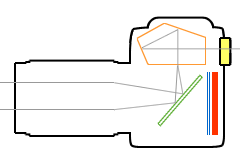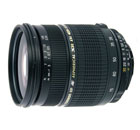If you've been wondering "what is a digital SLR?" I'm not all that surprised.
Many consumers are much more familiar with compact digital cameras, since these models have flooded the marketplace.
Like cell phones, it's hard to walk down the street these days without seeing someone snapping a photo. Digital SLR cameras are far less common, and up until 2005 were really only used by professionals.
The good news is that the price of digital SLRs keeps falling and many are competitive now with the high-end compact cameras. This also means that many new consumers are hearing about these cameras and aren't quite sure what they can do.
So what is a digital SLR? Let's find out.
SLR Defined
SLR is an abbreviation: it stands for Single Lens Reflex.
Now you know what SLR stands for but that doesn't really help answer the question, does it? Let's define further:
- With an SLR camera, you see exactly what the lens sees
- You can change the lens on a digital SLR
- Digital SLRs have large image sensors that produce high-quality photos
- An SLR has a near-zero lag time, and is ideal for action photography
Bottom line? Digital SLR cameras are versatile.
You can take photos of everything from sleeping kittens to race cars and you'll never be limited by your camera.
With an SLR in your hands you can rest assured that you'll only miss great photo opportunities because you weren't prepared, not because your camera was too slow.
The Anatomy of a Digital SLR
To properly answer "what is a digital SLR?" you have to understand a bit about the mechanics of an SLR camera.
In order to avoid getting overly technical I've simplified this diagram and am highlighting the key elements.
If you really want to dredge into the specifics, you can do that at Wikipedia.

- Light passes through the lens and strikes a mirror (green)
- The mirror reflects the light up to a focusing screen
- Light passes through the focusing screen and enters a block of glass called a pentaprism (orange)
- The pentaprism reflects the image so that you can see it in the viewfinder
- When you take a photo, the mirror flips up and a shutter (blue) opens that exposes the digital sensor (red) to light
This is a great example of what-you-see-is-what-you-get. By using the viewfinder you can precisely compose your image and adjust the focus.
Is ithe image that you see in the viewfinder 100% accurate? In most cases it isn't.
If you read digital SLR camera reviews, you may hear a lot about viewfinder "coverage" and "brightness".
Many digital SLR viewfinders only show you 95% of the image that will be captured by the sensor - this is what "coverage" refers to. Unless you are extremely precise when it comes to your photographs you won't notice the 5% difference.
Digital SLR viewfinders also vary in brightness, which is another way of saying how clear the image appears. "Bright" viewfinders make it easier to use manual focus, since you can clearly see the details of your subject.
A Lens For Every Occasion

In addition to the pentaprism viewfinder, one of the key features of any digital SLR camera is the ability to change lenses.
Most people think that the camera alone is responsible for capturing an image, but this isn't the case.
The lens that's attached to it can play a huge role in the color, contrast and clarity of every single photo that you take.
Owners of digital SLR cameras can buy lenses that match their photography style, since a landscape photographer should not use the same lens as a wildlife photographer.
The ability to swap lenses at any time adds to the versatility of a digital SLR camera, and means that even if your photography needs change in a couple years, you won't have to buy a new camera, you'll just need a different lens.






